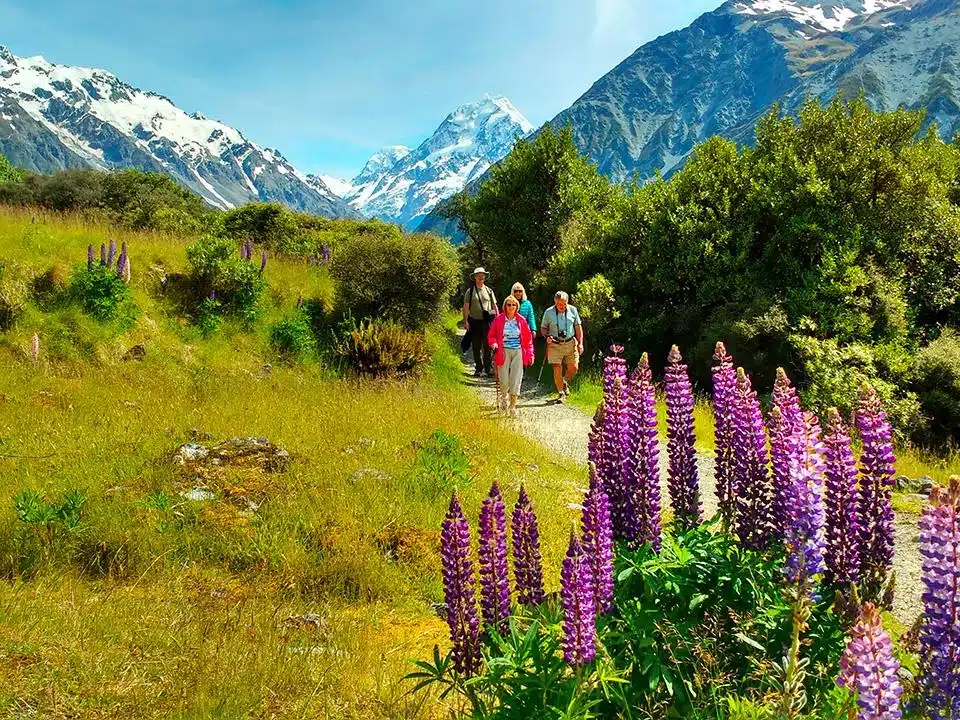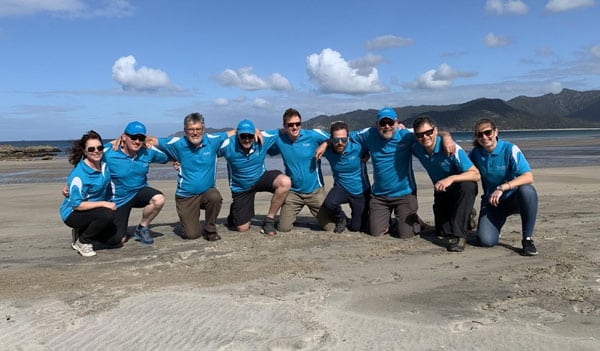Don’t worry – once you get used to the pungent, eggy aroma you’ll find a lot to enjoy in “Sulphur City.” Visitors have been flocking here for many years in search of the healing properties of the geothermal pools. The jaw-dropping geysers, bright coloured mineral lakes and boiling mud pools are a sight to behold, but they are not the only thing Rotorua has to offer.
This town also has a large Maori population and is an iconic place to enjoy traditional feasts, authentic performances and traditions. The surrounding countryside is also a delight for outdoor enthusiasts, offering crystal springs, bubbling brooks and turquoise lakes.
Plus, the vibrant town centre offers plenty of great places to enjoy a delicious meal and a glass of New Zealand wine at the end of the day. You’ll quickly discover the vibrant culinary and culture scene here is just as hot as the bubbling geothermal pools.
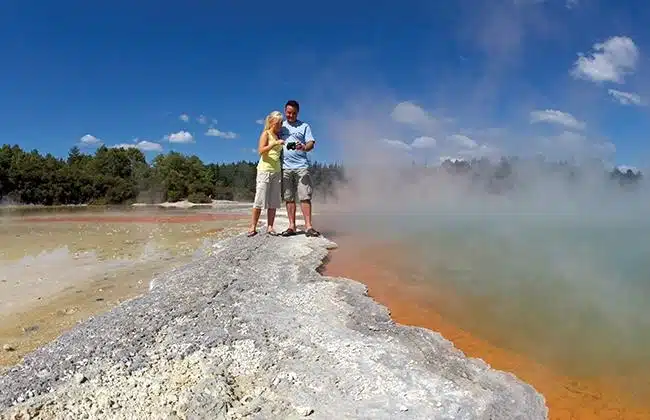
Activities & Attractions
Dining
Take a walk down bustling “Eat Streat” in Rotorua and you’ll find a collection of casual eateries, elegant bistros and friendly cafes to try. Atticus Finch serves up fresh, contemporary New Zealand food with options for vegetarians and vegans. Or, treat yourself to fine dining Pacific Rim cuisine at Mokoia Restaurant, which has won awards for the quality of it’s beef and lamb. Another popular local favorite is Stratosfare Restaurant, which is perched on the top of Mount Ngongotaha. It serves up a mouth-watering buffet with scenic views.
Maori Culture
Rotorua is a fantastic place to get an insight into Maori culture. It’s possible to visit a living Maori village, where the locals use the boiling water from the geothermal cools to cook, bathe and warm their houses.
In Rotorua you can take part in a traditional Maori feast, which will include singing, dancing and a haka (war dance) performance. The meal will be cooked in a “hangi” – which is a pit under the ground, heated by the embers of a fire. Fish, pork, chicken and root vegetables are buried in the pit, slow cooked for hours in the earth, and then unearthed with a distinct, mouth-watering smoked flavour.
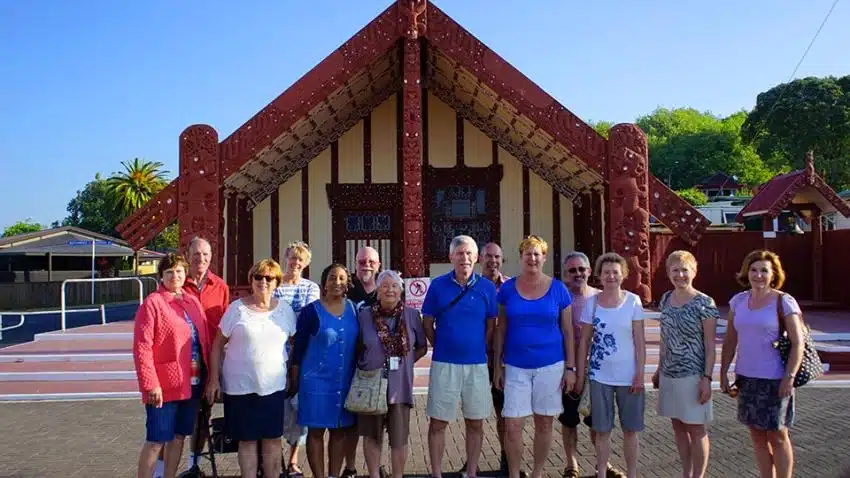
Geothermal action
Rotorua is one of the most geothermally active places in the country and Te Puia’s 70 hectare park in the beautiful Whakarewarewa Thermal Valley is right in the heart of everything. Forces boil to the surface in the enchanting, superheated mud pools and hot springs and geysers gush hot steam and water in spectacular fashion.
The famous Pohutu Geyser erupts approximately every 20 minutes and bursts reach heights of 30m (100ft). This picture from RotoruaNZ:
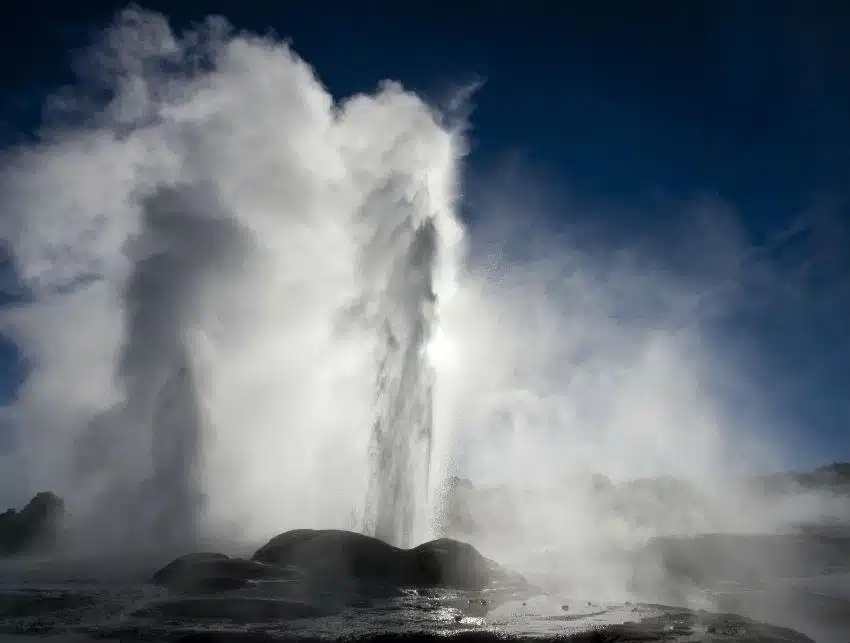
Hiking
Rotorua is surrounded by gorgeous lakes and forest scenery, so you’re never far from a scenic trail. One of the best walks in the region is the Tarawera Trail. At the end of this hike you can enjoy a relaxing hot soak in a geothermal pool near the edge of Lake Tarawera. There’s also the spectacular walk around Waiotapu, a colourful and surreal geothermal landscape that makes you feel like you are on another planet. Or, take a pleasant day hike to the Blue Lake Track, a quiet stroll around a bright blue lake within a volcanic crater.
Shopping
The town of Rotorua is packed with unique, high quality shopping experiences. A lot of the art and handicrafts you’ll find here is inspired by Maori culture and history. For example, check out Ahu Boutique, where you can find clothing designs inspired by Maori culture. At Mountain Jade, you’ll find stunning carvings made by local artists.
Also, at many of the local shops you can buy beauty products made from the geothermal elements of the region. You can also find some excellent products made from New Zealand wool at the Agrodome’s gift shop. Plus – don’t miss the popular Saturday Flea Market where you can find delicious treats made by local artisans.
Museums
The Rotorua Museum is located within the historic bathhouses, but it is closed to the public for the foreseeable future as it did not meet earthquake safety standards. However, it still provides a range of “beyond the walls” visitor experiences including events, education programs and free guided tours of the beautiful Government Gardens. So, visitors will still be able to get an insight into the historic places, buildings and battles of Rotorua’s history.
You can also visit the “Buried Village” just a short drive outside of Rotorua. View the uncovered Maori village of Te Wairoa, which was covered in boiling mud and preserved after the 1886 volcanic eruption.
Picture of the Buried Village Museum (NZ Herald):
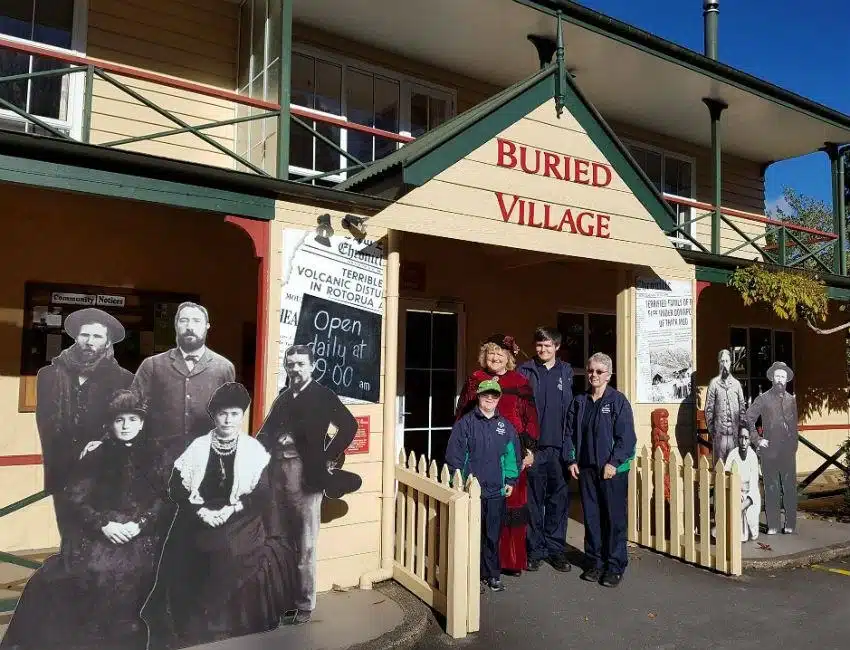
History & Culture
Rotorua is one of the oldest tourist destinations in New Zealand. Visitors have been coming to this unique spot for more than two centuries, seeking out the healing powers of the geothermal pools.
While other early settlements were built around fertile farming regions or discoveries of gold, Rotorua was different. It was built around the geothermal lakes and hot springs that give it that unmistakable rotten egg aroma.
In the late 1800s, the government developed a beautiful European-style spa town with picturesque gardens. The elegant bath house was built in 1908 and the luxurious treatment facilities attracted even more wealthy tourists.
Rotorua was originally inhabited by Maori people and today, 40% of the population identify as Maori. It was founded by a Maori explorer called Ihenga in the 14th century. This makes it the New Zealand city with the biggest proportion of Maori of anywhere else, except Gisborne. It no wonder it’s considered the heartland of Maori culture.
One of the most significant events in the history of Rotorua was the Mount Tarawera 1886 Eruption. The spectacular explosion sent columns of smoke and ash thousands of metres into the air and the sound was heard as far away as Auckland. This natural disaster killed over 120 people, buried the Maori village of Te Wairoa and destroyed the Pink and White Terraces. Many of the lakes in the area dramatically changed shape due to this explosion.
Key Facts
- One of the easiest ways to get around in Rotorua is the local CityRide bus. You can see the bus timetables here.
- The Kuirau Park Flea Market takes place every Saturday morning and features delicious freshly made local treats, as well as clothing, jewellery and artwork.
- The name “Rotorua” comes from a Maori word that means ‘second lake’.
- The region surrounding Rotorua is one of the best trout fishing spots in New Zealand.
- The nearby Waimangu Volcanic Valley is the youngest geothermal system on the planet.
Rotorua with MoaTrek
Our tours that visit Rotorua include the following;
- Two nights in Rotorua allowing time to explore the town and surrounding region, feel the warmth of Maori culture and personalise your tour with any optional activities you select.
- Travel the dramatic highway alongside the Ohinemuri River through the Karangahake Gorge.
- Meet the growers at a working Kiwifruit orchard and taste the produce fresh off the vine.
- Take a cruise on Lake Rotoiti onboard luxury catamaran “Tiua” and soak in the hot pools on the shores of the lake, only accessible by boat.
- Stroll from your centrally located hotel to nearby Ohinemutu marae, one of only two living Maori villages left in New Zealand.
- Meet the locals and learn about their Maori and European ancestors at Lake Tarawera, you’ll love them and their stories.
- Discover Rotorua’s impressive Blue and Green lakes.
- Learn about geothermal history with a visit to the surreal Wai-O-Tapu. It’s the worlds biggest mud pool, and the striking colours of the silica terraces are incredible.
- See the powerful Huka Falls surge with over 220,000 litres of water per second.
Tours You'll Love
Kaka 17 Day Tour
The best of both islands, all the spots we loved to visit as kids. From Rotorua and Tongariro National Park in the North and Abel Tasman, Milford Sound and Mt Cook in the South. All the comforts of home and unforgettable experiences every day.


